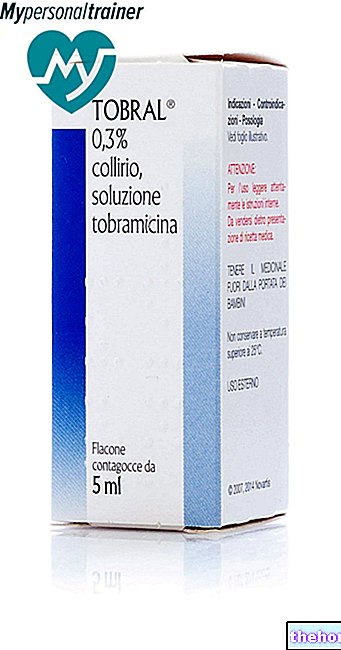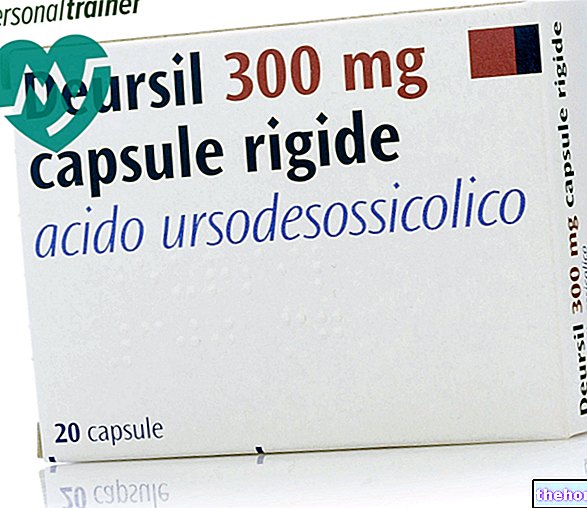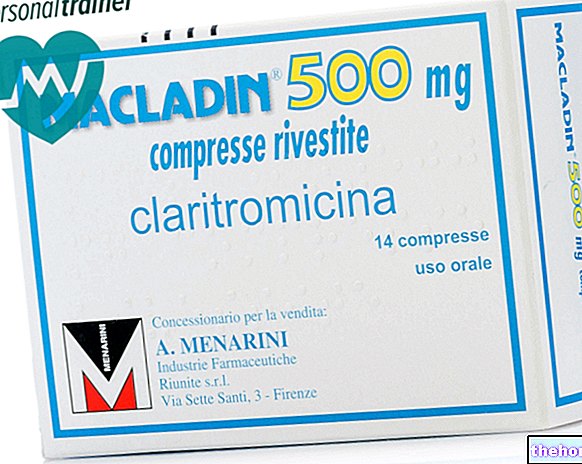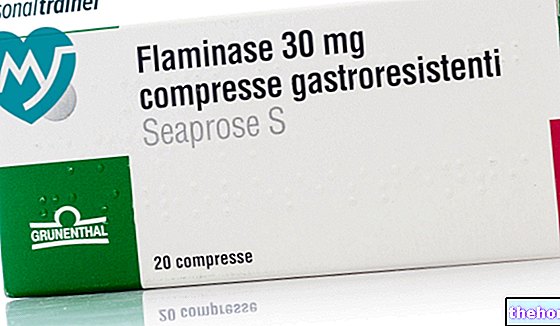Active ingredients: Loperamide
LOPEMID "2 mg hard capsules" 30 capsules
Why is Lopemid used? What is it for?
PHARMACOTHERAPEUTIC CATEGORY
Antidiarrheal
THERAPEUTIC INDICATIONS
Lopemid is indicated for the symptomatic treatment of acute and chronic diarrhea.
After ileostomy it allows to decrease the number and volume of discharges and to increase their consistency.
Contraindications When Lopemid should not be used
Hypersensitivity to the active substance or to any of the excipients.
Lopemid should not be used when any inhibition of intestinal peristalsis is to be avoided.
Contraindicated in children under 12 years.
Interactions Which drugs or foods may change the effect of Lopemid
Tell your doctor or pharmacist if you have recently taken any other medicines, even those without a prescription.
Possible interactions can occur with: drugs that slow intestinal peristalsis (for example anticholinergics), as the effects of loperamide could be enhanced.
The concomitant use of CYP450 inhibitors and P-glycoprotein inhibitors is not recommended.
Warnings It is important to know that:
Not to be used under 12 years of age.
Pregnancy and breastfeeding:
Ask your doctor or pharmacist for advice before taking any medicine.
In pregnant women, especially in the first trimester, the product should only be used if clearly needed and under direct medical supervision.
Effects on ability to drive and use machines: Lopemid does not affect the ability to drive or use machines.
The drug does not alter the state of alertness.
Dose, Method and Time of Administration How to use Lopemid: Posology
Warning: do not use for more than two days.
Acute diarrhea
- Adults: the starting dose is 2 capsules for adults. Thereafter 1 capsule after each emptying of unformed (soft) stools. Maximum dose 8 capsules (adults).
Decrease the dose after stool normalization. In the event of constipation, discontinue therapy.
Chronic diarrhea
Normal evacuation can almost always be achieved with a suitable dose for each patient. The starting dose is:
- Adults: 2 capsules per day. This initial dose must be adjusted until the evacuation of the stool formed 1-2 times a day is obtained.
This is usually possible with a maintenance dose of 1 to 6 capsules per day in adults.
Decrease the dose as soon as the stool has normalized; stop treatment in case of constipation.
Overdose What to do if you have taken too much Lopemid
In case of accidental ingestion / intake of an excessive dose of Lopemid, notify your doctor immediately or go to the nearest hospital.
CNS depression (stupor, uncoordinated movements, somnolence, miosis, muscle hypertonia, respiratory depression) and constipation may occur in the event of overdose, including that related to hepatic dysfunction.
Measures in case of overdose: gastric lavage, induction of vomiting, enema or administration of laxatives.
Urgent measures: inject naloxone; if necessary, repeat the naloxone injection after 1-3 hours and monitor the patient for at least 48 hours for any worsening of central nervous system depression.
Children are more sensitive than adults to the effects of a loperamide overdose. Therefore it is recommended to keep the product out of their reach because accidental ingestion, especially in children under 4 years old, can cause constipation and central nervous system depression with drowsiness and slowed breathing. In this case the patient should be kept under careful observation for 48 hours.
If you have any questions about the use of Lopemid, ask your doctor or pharmacist
Side Effects What are the side effects of Lopemid
Like all medicines, Lopemid can cause side effects, although not everybody gets them.
With the exception of a few rare cases of abdominal pain and dry mouth, no other side effects have been observed even after prolonged treatments.
Compliance with the instructions contained in the package leaflet reduces the risk of undesirable effects.
If any of the side effects gets serious or if you notice any side effects not listed in this leaflet, please inform your doctor or pharmacist.
Expiry and Retention
Expiry: see the expiry date indicated on the package.
The expiry date refers to the product in intact packaging, properly stored.
WARNING: do not use the medicine beyond the expiration date indicated on the package.
To be stored at room temperature (between + 8 ° and + 30 ° C)
Medicines should not be disposed of via wastewater or household waste. Ask your pharmacist how to throw away medicines you no longer use. This will help protect the environment.
COMPOSITION
Each capsule contains:
Active principle
Loperamide hydrochloride 2 mg.
Excipients
microcrystalline cellulose, lactose monohydrate, talc.
Constituents of the shell:
gelatin, titanium dioxide.
PHARMACEUTICAL FORM AND PACKAGING
2 mg hard capsules 30 capsules
Source Package Leaflet: AIFA (Italian Medicines Agency). Content published in January 2016. The information present may not be up-to-date.
To have access to the most up-to-date version, it is advisable to access the AIFA (Italian Medicines Agency) website. Disclaimer and useful information.
01.0 NAME OF THE MEDICINAL PRODUCT
LOPEMID
02.0 QUALITATIVE AND QUANTITATIVE COMPOSITION
One capsule contains: 2.0 mg loperamide hydrochloride.
For the full list of excipients, see section 6.1
03.0 PHARMACEUTICAL FORM
Capsules.
04.0 CLINICAL INFORMATION
04.1 Therapeutic indications
Lopemid is indicated for the symptomatic treatment of acute and chronic diarrhea.
After ileostomy it allows to decrease the number and volume of discharges and to increase their consistency.
04.2 Posology and method of administration
Warning: do not use for more than two days.
Acute diarrhea
Adults: the starting dose is 2 capsules for adults. Then one capsule after each emptying of unformed (soft) stools.
Maximum dose 8 capsules
Decrease the dose after stool normalization.
In the event of constipation, discontinue therapy.
Chronic diarrhea
Normal evacuation can almost always be achieved with a suitable dose for each patient. The starting dose is:
Adults: 2 capsules per day.
This initial dose must be adjusted until the evacuation of the stool formed 1-2 times a day is obtained.
This is usually possible with a maintenance dose of 1 to 6 capsules per day in adults.
Decrease the dose as soon as the stool has normalized; stop treatment in case of constipation.
04.3 Contraindications
Hypersensitivity to the active substance or to any of the excipients.
Lopemid should not be used when any inhibition of intestinal peristalsis is to be avoided.
The drug should not be used in children under 4 years of age due to the possibility of relative overdose as a consequence of a possible immaturity of hepatic function, essential for the metabolism of loperamide.
Contraindicated under 12 years.
04.4 Special warnings and appropriate precautions for use
Not to be used under the age of 12.
04.5 Interactions with other medicinal products and other forms of interaction
Possible interactions can occur with: drugs that slow intestinal peristalsis (for example anticholinergics), as the effects of loperamide could be enhanced.
The concomitant use of CYP450 inhibitors and P-glycoprotein inhibitors is not recommended.
04.6 Pregnancy and lactation
In pregnant women, especially in the first trimester, the product should be administered only in case of real need and under medical supervision.
04.7 Effects on ability to drive and use machines
Lopemid does not affect the ability to drive or use machines.
04.8 Undesirable effects
Exceptionally some rare cases of abdominal pain and dry mouth.
04.9 Overdose
CNS depression (stupor, uncoordinated movements, somnolence, miosis, muscle hypertonia, respiratory depression) and constipation may occur in the event of overdose, including that related to hepatic dysfunction.
Measures in case of overdose: gastric lavage, induction of vomiting, enema or administration of laxatives.
Urgent measures: inject naloxone; if necessary, repeat the naloxone injection after 1-3 hours and monitor the patient for at least 48 hours for any worsening of central nervous system depression.
Children are more sensitive than adults to the effects of a loperamide overdose. Therefore it is recommended to keep the product out of their reach because accidental ingestion, especially in children under 4 years old, can cause constipation and central nervous system depression with drowsiness and slowed breathing. In this case the patient should be kept under careful observation for 48 hours.
05.0 PHARMACOLOGICAL PROPERTIES
05.1 Pharmacodynamic properties
ATC code: A07DA
Lopemid has an antidiarrheal activity by direct effect on intestinal peristalsis; it acts selectively on the Auerbach's nerve plexuses of the intestinal wall. It also inhibits the hypersecretion of liquids and electrolytes through the intestinal wall. It does not interfere with the release of acetylcholine at the level of the parasympathetic post-ganglionic nerve endings; it is therefore not an anticholinergic drug. It has no effects on the central nervous system: it does not determine therefore habituation nor addiction.
05.2 "Pharmacokinetic properties
Absorption:
Lopemid is well absorbed orally.
Distribution:
Four hours after administration, the maximum concentrations are found in the blood.
Metabolism:
Only a small part is excreted in the urine; most are eliminated in the faeces.
05.3 Preclinical safety data
The acute toxicity of loperamide in rats is as follows: LD50 per os 450 mg / kg, LD50 i.p. 43 mg / kg.
In the course of chronic toxicity tests in rats and dogs, the drug was well tolerated and no noteworthy toxic effects were highlighted. Furthermore, loperamide was neither teratogenic nor mutagenic.
Carcinogenesis: to be excluded (rat).
Embryotoxic, teratogenic activity on fertility: absent.
06.0 PHARMACEUTICAL INFORMATION
06.1 Excipients
Microcrystalline cellulose, lactose monohydrate, talc.
Constituents of the shell: gelatin, titanium dioxide.
06.2 Incompatibility
Not relevant
06.3 Period of validity
4 years
06.4 Special precautions for storage
This medicine does not require any special storage conditions.
To be stored at room temperature (between + 8 ° and + 30 ° C, as required by F.U. IX).
06.5 Nature of the immediate packaging and contents of the package
Blister 30 capsules
06.6 Instructions for use and handling
No special instructions.
07.0 MARKETING AUTHORIZATION HOLDER
Visufarma S.p.A.
Via Canino, 21 - 00191 Rome
08.0 MARKETING AUTHORIZATION NUMBER
30 capsules 023691013
09.0 DATE OF FIRST AUTHORIZATION OR RENEWAL OF THE AUTHORIZATION
June 2005
10.0 DATE OF REVISION OF THE TEXT
AIFA Determination of 22 March 2010




























